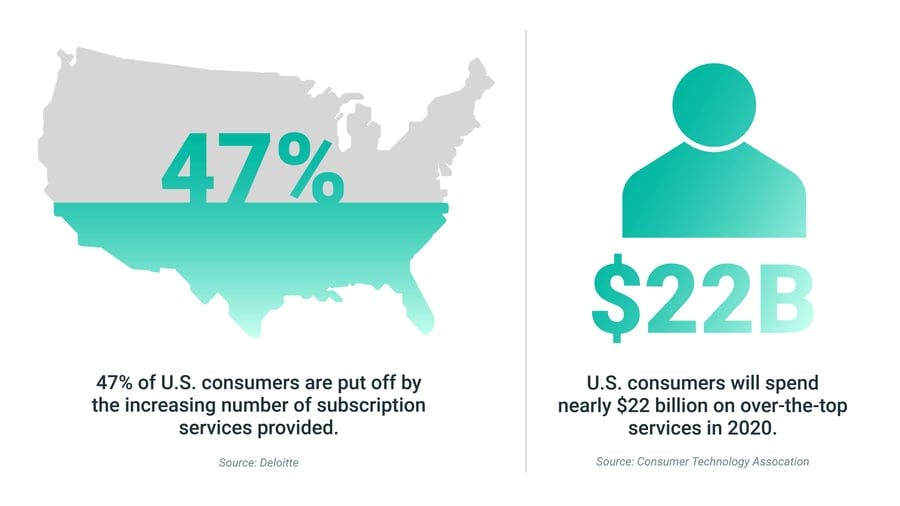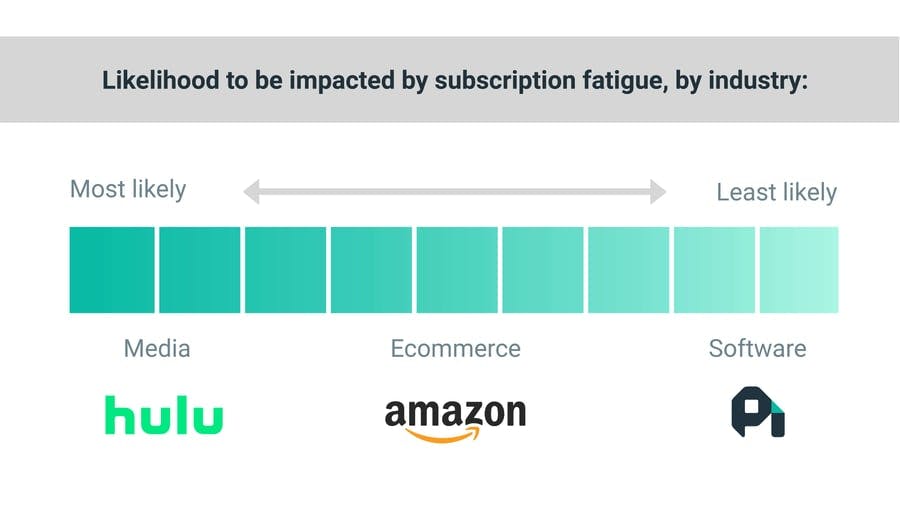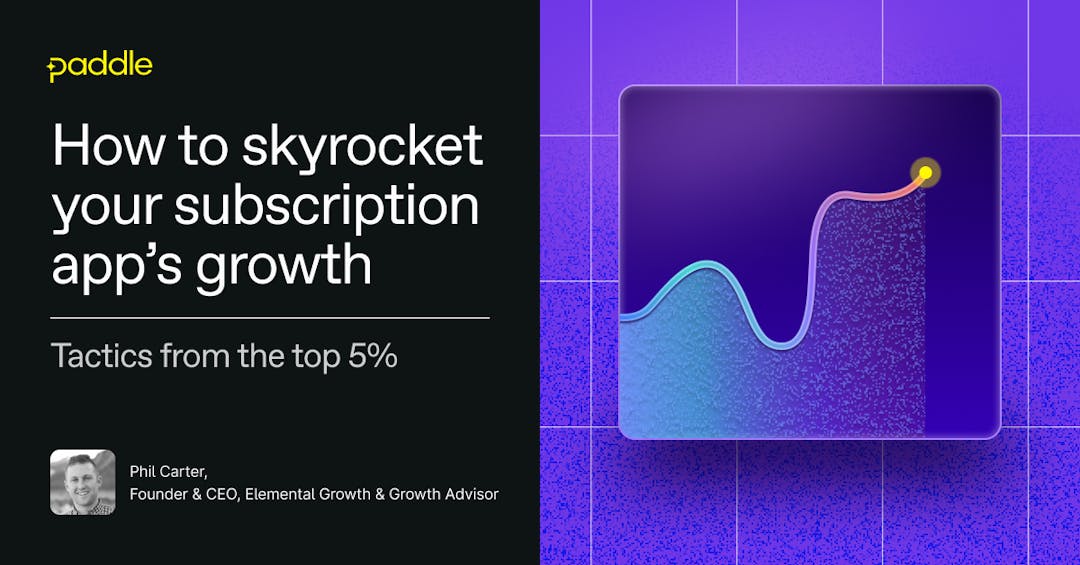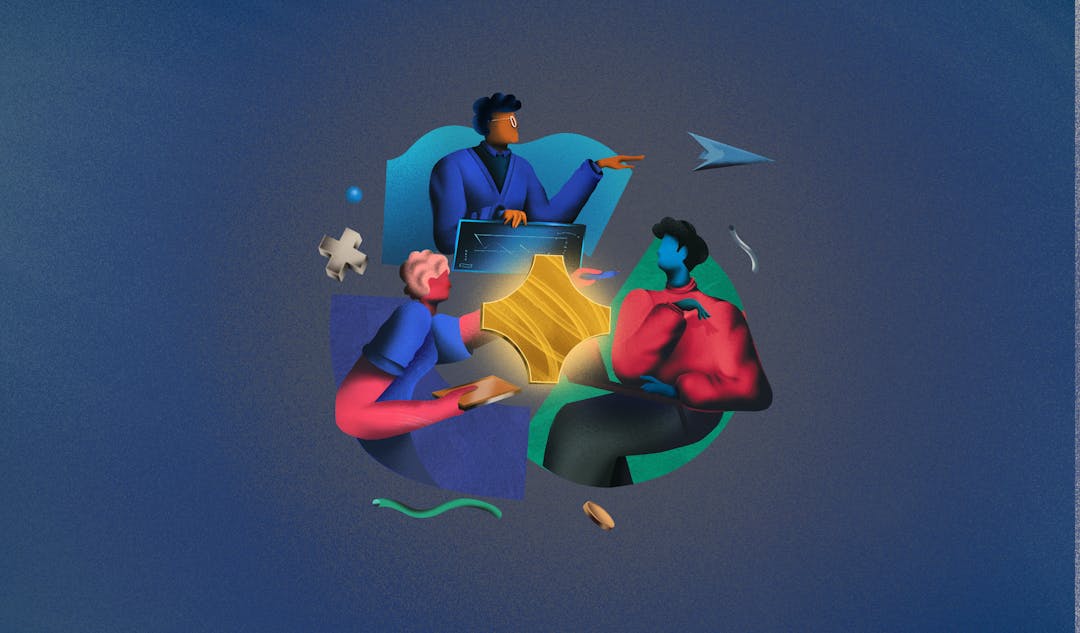The proliferation of subscription businesses has potentially led consumers to tire of subscriptions. We explore just how bad subscription fatigue is.
If you take a moment to think about it, can you confidently tell somebody how many subscription services you're a member of? Netflix, Hulu, Spotify, HBO... and what was that other one?
Even if you can list off every subscription service you're a die-hard fan of, you may eventually find yourself feeling dissatisfied on a mission to sign up for even more subscriptions. These brands have become a routine part of daily life for a significant portion of the population. That means that, as with all routine things, some of us tire of them more quickly than others.
There's little doubt: subscription businesses have proliferated the market. Many current and potential subscription business owners view this as a positive thing; but how helpful is an audience that's tired of what they're being fed? A growing subset of consumers is indicating that they're tired of subscriptions—but what exactly is "subscription fatigue," and how can these businesses take steps to fend it off?
What is subscription fatigue?
Subscription fatigue is a feeling of overwhelm and frustration experienced by consumers who find themselves inundated with subscription services and products. It is often associated with reactions the increase in streaming services in the media and entertainment industry, but also applies to FMCG product subscriptions and can be a risk in software.
Subscription fatigue by the numbers: Is it really happening?
In truth, the statistics that surround subscription fatigue vary. Some suggest that there may be room yet for further subscription growth; others indicate that customers are growing tired of adding ever more subscriptions to their already sizable lists.

Consumers don't want more
Research indicates that despite an appetite for content, tools, and goods, a significant portion of consumers don't want to subscribe to any more services. They feel as though they already have enough—or perhaps even too many— subscription services under their belt.
This may not be the brightest ray of light in the subscription service landscape, but it's a good opportunity to learn. Subscription businesses that want to see success in the coming years need to remember that they'll be fighting for priority. The more unique or needs-based a subscription service is, the more likely it is to make it onto consumers' shortlists.
More does not equal satisfaction
Deloitte's 13th edition of its annual Digital Media Trends survey showed that close to half (47%) of US consumers are put off by the ever-growing number of subscription services to choose from (check out our post on the most popular subscription services across industries). It's proof that more options don't always translate to more customer satisfaction.
This unprecedented period of "subscription fatigue" shows subscription providers something important: consumers want choices, but only up to a certain point. It's important to remember that half of subscription customers feel overwhelmed or frustrated by their options. Subscription businesses should tailor their offerings and services with this in mind.
But, some consumers will spend more
It's not all bad for subscription businesses. One trade group estimated that US consumers will spend nearly $22 billion on over-the-top (OTT) services throughout 2020. That leaves plenty of fluid funds in the mix for subscription brands. 2019 saw less than $18 billion in OTT spending—that twenty-plus percent increase will send ripples through subscription providers across the country.
How subscription fatigue differs by industry: 3 types of subscription businesses
Subscription fatigue tends to work a little differently depending on which industry a subscription brand operates in. Media subscription brands, for example, often enjoy a little more security than commerce-based subscriptions. There are no hard and fast rules about which businesses do best in the Wild West of subscriptions, but some general themes tend to hold steady.

Media
Music, television, film, etc.
This subset of subscriptions is the ripest for subscription fatigue. This is for a plethora of reasons. Some, like the popularity of illicit streaming services, are less favorable than others. Others include more of our growing desire to connect with the people around us; we love to talk about the latest media with our closest friends and family. These brands also need to consider, though, that they do not fulfill a "need." The ever-expanding list of media subscription businesses doesn't help.
Ecommerce
Amazon, Blue Apron, etc.
Ecommerce subscriptions are in a sort of gray area. Whilst some statistics indicate slowing growth in this area, there's little doubt that most people you know have an Amazon Prime account. Experts expect to gain better insight into the realm of commerce subscriptions as time goes on. Until then, you can use ProfitWell’s eCommerce subscription analytics platform to monitor the performance of your online business.
Software
Software subscriptions are perhaps the least likely to be influenced by subscription fatigue. It's easy to understand why. If you maintain your own software subscriptions, you'll likely have a tough time denying: that software fulfills a need. Consumers and businesses have their own unique requirements. Specialized software is often the only way to meet some of them.
B2B
B2B subscription-based business centers around three things: cross-selling, upselling, and increasing customer retention. If these are achieved, subscription fatigue should hardly even enter a subscription brand's vocabulary. Stanford Business has even predicted that all B2B and B2C businesses will become subscription businesses in the future.
B2C
B2C software subscription businesses may not enjoy the same level of stability as their B2B counterparts. But there's no denying the truth, people who purchase software subscriptions usually either need or greatly enjoy them. B2C software subscription brands are less likely to grapple with subscription fatigue than, for example, commerce-based subscription brands.
How subscription businesses can combat subscription fatigue
The good news for subscription service owners is that subscription fatigue can be combated. It takes some effort and time, but subscription brands can take a number of steps to minimize subscription fatigue and increase customer interest.
Focus on the essentials
The more necessary your service is to fulfill a customer need, the less likely customers are to forego subscribing to your service.
It's simple math. If we figure that customers are experiencing or are about to experience subscription fatigue, just to be safe, then we know that a brand needs to take precedence over services in order to be chosen. Ask yourself: what is the easiest way to ensure that your brand takes precedence? Focus on the essentials!
For some brands, this might be literal. Offering essential items or services (like hygiene products) ups your chance of combatting "fatigue" around your subscription. Even if your service isn't a true requirement (think video streaming), you're still more likely to see success if you're providing media that everybody feels they need.
Prioritize retention over acquisition
Subscription businesses that want to see success have to prioritize retention over acquisition. It's the only way to remain in the right mindset to combat subscription fatigue.
Improving retention allows brands to spend less on acquiring new customers. Less spending and focus on acquisition, which is prone to suffering from the impacts of subscription fatigue, is more. Focus on retaining the customers you have; they'll build out your client base themselves.
Optimize pricing
The subscription landscape is a competitive one. Many consumers are beginning to express hesitance to sign up for new subscriptions.
The only way to begin to combat this is through optimized pricing. Your prices should be as competitive as possible without sacrificing profit. Subscription brands that see consistent success use their pricing to bring in new subscribers; it's like the ultra-short version of a traditional acquisition plan.
Make onboarding as easy as possible
Onboarding for your subscription service has to be simple. Today's consumers are busy and impatient— if they can't figure out your service, they have plenty more to choose from.
Subscription brands should minimize signup barriers. The easier it is to start up a subscription, the more likely your audience is to actually become your customer base.
Conclusion
Nobody can deny that subscription fatigue plays a role in how subscription brands operate and market within the industry. Some segments of the subscription sector tend to experience higher levels of consumer fatigue than others. The good news is that, regardless of your brand's unique purpose, you can take steps to strengthen your customer base and reduce your audience's chances of subscription fatigue.
Looking for a subscription management system that manages payments, tax, compliance and fraud for you? Sign up to Paddle's automated billing system and scale your subscription app faster.







